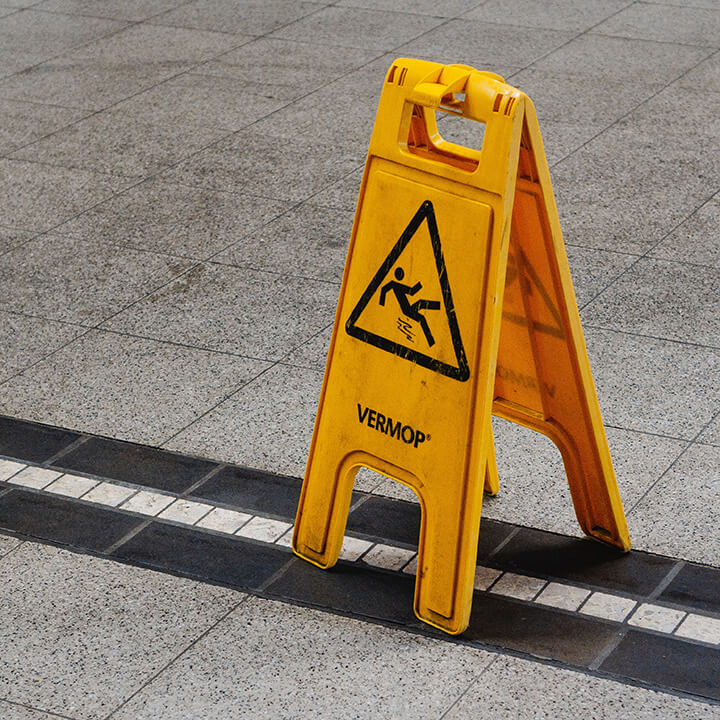What the latest HSE statistics mean for businesses
16th August 2022
Walker Morris Health & Safety experts Stuart Ponting and Michael Cordeaux discuss the latest workplace fatal injury statistics from the Health and Safety Executive (HSE) and offer their practical advice.

What do the latest HSE statistics show?
The latest figures show there were 123 fatal worker accidents in the UK from April 2021 to March 2022, a figure broadly in line with pre-pandemic levels and annual worker fatalities over the last decade.
The HSE statistics reveal that falls from height remain the leading cause of death, and the construction sector continues to be the industry with the most fatal accidents (30 in total). Agriculture, forestry and fishing, along with manufacturing closely follow with 22 fatal incidents each. 80 members of the public were also killed due to work-related accidents and a staggering 51,211 injuries to employees were reported to the HSE under RIDDOR (Reporting of Injuries, Diseases and Dangerous Occurrences Regulations 2013).
While the UK may have lower rates of fatal injury than most European nations, it is still outperformed by Ireland and Germany among others for which comparable data is available.
Why does it matter?
It’s only a matter of time before businesses that fail to adequately manage risk fall foul of the regulator. The penalties for those found in breach of health and safety law are significant. Prosecutions following a fatality are always likely and the HSE will often investigate wider business activity following such an incident. Moreover, and of critical importance when addressing health and safety, it is the risk of harm that can trigger enforcement action; no actual harm has to have occurred.
To check compliance with relevant legislation the HSE will take both a proactive approach (such as their recent construction campaign involving 1,000 inspections resulting in over 600 enforcement notices) as well as a reactive approach. In the past 12 months HSE statistics show it responded to 87,200 public enquiries and concerns, in addition to obtaining leads via RIDDOR and other reporting sources.
In 2021/22 the HSE issued 6,900 improvement and prohibition notices and reported a 96% conviction rate on its prosecutions. Of course, the HSE benefit from the fee for intervention scheme allowing them to recover their costs on the discovery of a material breach (in the subjective ‘inspector’s opinion’) and regardless of whether enforcement action follows, there is a real drive to get inspectors on site and inspecting regularly.
In the most serious of cases, the fines levied continue to rise on the back of the Sentencing Council guidelines implemented in 2016. Six individual fines issued by the HSE in the last 12 months exceeded £1 million, including two of the largest ever, with Northern Gas Networks Limited fined £5 million and Cleveland Bridge UK Limited receiving a £1.5 million penalty. A number of custodial sentences for culpable directors were also handed down setting a new tone for individual enforcement action.
What should you do now?
Health and safety should be the keystone within an organisation, from director and board level to new starters, particularly in high-risk industries. Regular legal and compliance audits should identify areas of non-compliance and help prevent even the best policies and procedures becoming stale. Ensuring risks are routinely assessed, equipment is appropriately maintained, and appropriate information, instructions and supervision are provided to employees and contractors is key.
Independent advice and accreditation can help to ensure best practice and reduce risk by identifying any blind spots in the business. Accreditation schemes also help demonstrate to the regulator that a business is compliant and is serious about managing risk. Industry specific accreditation may suit your business however it is also wise to look outside your sector or industry to see how others invest in achieving best practice in health and safety.
Cultural investment is as important as financial investment and ensuring action is taken against those that don’t follow the rules to avoid bad habits creeping into custom and practice is fundamental to success. Training must not become a ‘box ticking’ exercise but instead be targeted, relevant, engaging and accessible. Good practice, near-miss reporting, and speaking up should be encouraged.
Ultimately, don’t be afraid to challenge your existing set-up, take a step back and ask yourself ‘are we really doing a good job or have we just been fortunate to have had no accidents?’
What does the future look like?
The HSE recently held its first General Meeting and published its 10 year strategy ‘Protecting people and places’. In the coming year the regulator plans to carry out 14,000 proactive inspections, and over the next decade redouble efforts to investigate employers showing disregard for risk management.
The HSE is also expanding its legal team, paving the way for more efficient prosecutions and a continued trend of increasing fines. It is more important than ever that businesses take appropriate steps to review and finesse existing health and safety initiatives to protect themselves and their employees.
How we can help
Our Health & Safety Team has a great deal of experience providing safety and risk management advice, leading and supporting on safety incident investigations and defending health and safety enforcement action, including prosecutions. Please contact Stuart or Mike if you need any advice or assistance.







